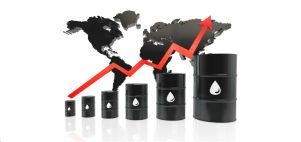Global Commodity Market Updates
The U.S. Dollar Index (DXY00) rose by +0.65% on Tuesday. The dollar saw a moderate increase, rebounding from a 3-year low recorded on Monday.
The Richmond Federal Reserve’s April manufacturing survey showed that the current conditions index fell by 9 points to -13, marking a five-month low and missing expectations of -7. Richmond Fed President Barkin noted that due to tariffs, businesses are in a defensive posture, delaying or postponing investments, and there are many reasons to be concerned about consumer spending.
The U.S. Treasury Department announced new sanctions targeting Seyed Asadoollah Emamjomeh (LPG) of Iran and his associated companies. According to Treasury Secretary Scott Bessent, Emamjomeh and his network attempted to export thousands of LPG shipments, including some originating from the U.S., in an effort to evade sanctions and generate revenue for Iran.
Key Commodity Highlights:
Metals
Gold prices dropped over 1% after hitting a record high of $3,500/oz earlier in the session. The decline followed statements from Treasury Secretary Scott Bessent indicating easing tensions between the U.S. and China, which boosted both stock markets and the U.S. dollar. Spot gold fell 1.5% to $3,372.68/oz.
U.S. stock markets climbed more than 2%, and the dollar rebounded, driven by Bessent’s comments suggesting that the tariff standoff is unsustainable. The U.S. dollar index rose 0.7% against a basket of major currencies, making bullion more expensive for foreign investors.
Since the beginning of the year, spot gold has surged 29%, setting 28 record highs and surpassing the $3,500/oz mark for the first time. JPMorgan forecasts that gold could exceed $4,000/oz within the next year amid rising recession risks and ongoing U.S.-China trade tensions. Copper prices also climbed 2.1% to $9,379/ton due to the weakening dollar.

Energy
Oil prices rose by more than $1 per barrel, buoyed by new U.S. sanctions on Iran and a stock market rebound following a prior sell-off. At the close of trading on April 22, Brent crude rose $1.18 to $67.44/barrel, while May and June WTI futures increased to $64.32 and $63.47/barrel, respectively.
In the previous session, both Brent and WTI had dropped over 2% amid progress in U.S.-Iran nuclear negotiations. The stock market had also dipped sharply following President Trump’s criticism of the Federal Reserve Chairman. However, a drop in U.S. crude oil inventories by nearly 4.6 million barrels helped boost oil prices.
Natural gas prices in the U.S. remained at a five-month low due to near-record production levels. Forecasts of mild weather are expected to reduce heating and cooling demand through early May 2025. During the session, May natural gas futures fell by 0.9 cents to $3.007/mmBTU, the lowest since November 19, 2024.











